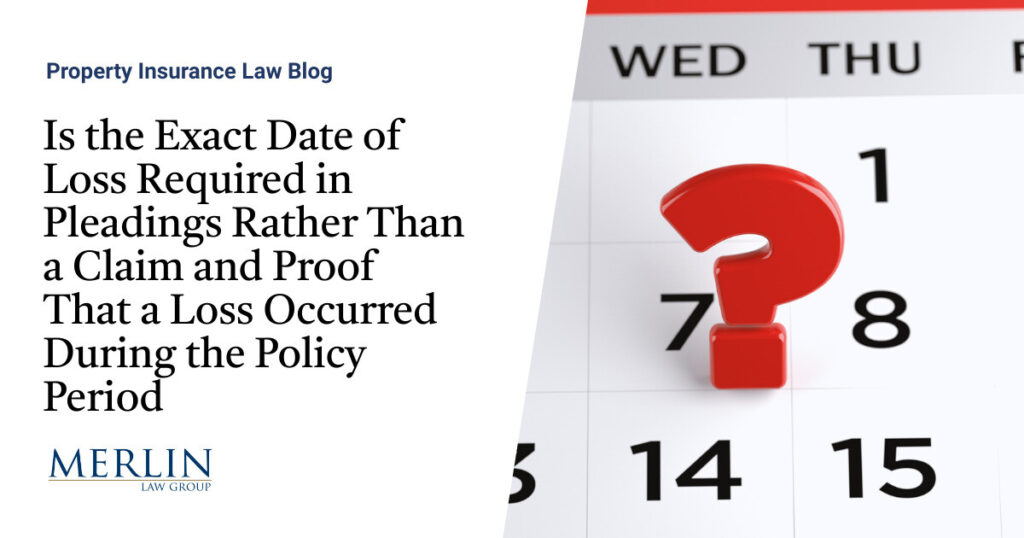Is the Exact Date of Loss Required in Pleadings Rather Than a Claim and Proof That a Loss Occurred During the Policy Period?

A recent ruling by a federal trial court stated that the policyholder claimed that a severe hailstorm on May 28, 2021, caused extensive damage to his property, including damage to the roof, vents, flashings, windows, window screens, fascia, gutters, downspouts, and HVAC system. The court noted that the plaintiff’s expert, Brandon Allen, “actually found that there was no storm event on May 28, 2021. Rather, Allen noted that there was a significant hailstorm on May 30, 2021, with hail up to .5 inches in diameter. The court then ruled against the policyholder, stating :
Plaintiff has never made any effort to amend the alleged date of loss, nor has he even acknowledged this inconsistency in his filings before the Court.
Missing the date of loss by two days in a pleading dooms a property insurance claim? Seems unjust to me and an example of requiring hyper-technical pleading over substance. I cannot think of one insurance company that has taken such a position unless the date would then be outside of the policy period.
So, I went back to the complaint to see what was alleged. Here is the allegation in the complaint:
State Fann Lloyds or its agent sold the Policy, insuring the Property, to Plaintiff. State Farm Lloyds represented to Plaintiff that the Policy included hail and windstorm. During the policy period from March 06, 2021 to March 06, 2022, the Property sustained extensive damage resulting from a severe storm that passed through the Williamson County, Texas area. State Farm assigned a date of loss of May 28, 2021 to Plaintiffs claim.
The pleading literally says a loss occurred during the policy period caused by hail and windstorm. The complaint alleges that State Farm, rather than the policyholder, assigned the May 28 date.
To be fair and thorough, the court cited several other key reasons why the policyholder lost the case beyond just the date being wrong by two days:
Lack of evidence to segregate damages: The policyholder failed to provide evidence that could segregate damages from the alleged date of loss (even the corrected date) from existing or prior damages to the property.
Failure to prove coverage: The policyholder could not prove that the claimed damages occurred within the policy coverage period or were caused solely by covered perils.
Inconsistent expert testimony: The policyholder’s expert, Brandon Allen, could not definitively date when the hail damage occurred, especially given the age of the roof.
Still, the court’s criticism of policyholder’s counsel for failing to amend or address the otherwise irrelevant discrepancy of two days is troubling. Many carriers assign a date that is not correct because to open a claim, a date must be assigned within the policy period. It is purely ministerial so long as the date of loss is within the policy coverage period. Indeed, it was State Farm that was wrong and not the policyholder, as facts were determined.
If the three items stated above had been met with sufficient proof, how would the two-day discrepancy lead to no coverage? Indeed, it would prove the policyholder’s allegation that “during the policy period from March 06, 2021 to March 06, 2022, the Property sustained extensive damage resulting from a severe storm…”
Placing form over substance and truth is not what our justice system should be. The ruling may be correct, but it is not correct because of the two-day discrepancy.
Thought For The Day
It is the spirit and not the form of law that keeps justice alive.
—Earl Warren, Former Chief Justice of the United States Supreme Court
1 Espinoza v. State Farm Lloyds, No. 1:23-cv-00751 (W.D. Tex. Sept. 16, 2024).







